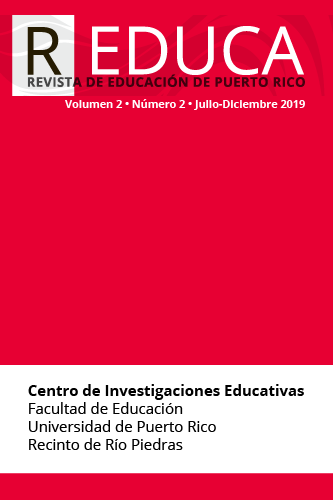Abstract
Number sense refers to a collection of skills that play a central role in mathematics education at all school levels. Its study has centered mostly on numerical issues related to primary school, while there is no consensus about its importance in mathematics education beyond middle school. Our hypothesis is that the study of number sense must include much more than numbers, their relations and operations, and that it is essential for students to be fully prepared to undertake mathematics courses at the university level. Students must develop, at school level, robust mental models for the various nuances of "number", such as: magnitudes, number systems, estimation and measurement processes, as well as the algebraic, variational and probabilistic dimensions of number. We propose a taxonomy for the models useful in developing number sense, and suggest ideas on how teachers can use it to translate those models into mental structures to help students build the basis for the study of mathematics in higher education.
References
De Lange, J. (2003). Mathematics for literacy. In B. L. Madison (Ed.), Quantitative literacy: Why numeracy matters for schools and colleges? (pp. 3-6). Princeton, NJ: The National Council on Education and the Disciplines. Available at: http://www.maa.org/sites/default/files/pdf/QL/WhyNumeracyMatters.pdf
Gravemeijer, K. P. E. (1994a). Developing realistic mathematics education. Utrecht, Netherlands: CD-ß Press Freudenthal Institute.
Gravemeijer, K. P. E. (1994b). Educational development and developmental research in mathematics education. Journal for Research in Mathematics Education, 25(5), 443-471.
Freudenthal, H. (1973). Mathematics as an educational task. Dordrecht, Netherlands: Kluwer Academic Publishers.
Freudenthal, H. (1983). Didactical phenomenology of mathematical structures. Dordrecht, Netherlands: D. Reidel Publishing Company.
Freudenthal, H. (1991). Revisiting mathematics education: China lectures. Dordrecht, Netherlands: Kluwer Academic Publishers.
Freudenthal, H. (1999). Didactical phenomenology of mathematical structures. Dordrecht, Netherlands: Reidel Publishing Company.
Kieren, T. E. (1980). The rational number construct: Its elements and mechanisms. In T. E. Kieren (Ed.), Recent research on number learning (pp. 125-150). Columbus, Ohio: Information Reference Center, Ohio State University. (ERIC Document Reproduction Service No. ED212463).
Kindt, M. (2004). Positive algebra: A collection of productive exercises. Utrecht, Netherlands: Freudenthal Institute.
Kindt, M. (2009). Re(j)alistic math: On the occasion of ten years Isfahan Mathematics House. Nieuwe Wiskrant, 28(4), 41-45. Available at http://www.fi.uu.nl/wiskrant/artikelen/284/284juni_kindt.pdf
Kindt, M., Dekker, T., & Burrill, G. (2006). Algebra rules! Chicago, IL: Encyclopædia Britannica.
Marshall, S. (1989). Number sense: Retrospective paper. In J. T. Sowder & B. P. Schapelle (Eds.), Establishing foundations for research on number sense and related topics: Report of a Conference (pp. 40-42). San Diego, CA: National Science Foundation ERIC document ED317413.
Organisation for Economic Co-operation and Development. (2012). PISA (2012) Mathematics framework. Paris: Author. Available at http://www.oecd.org/pisa/pisaproducts/46961598.pdf
Resnik, L. (1989). Defining, assessing and teaching number sense. In J. T. Sowder & B. P. Schapelle (Eds.), Establishing foundations for research on number sense and related topics: Report of a Conference (pp. 35-39). San Diego, CA: National Science Foundation ERIC document ED317413.
Sowder, J. T., & Schapelle, B. P. (Eds.). (1989). Establishing foundations for research on number sense and related topics: Report of a Conference. San Diego, CA: National Science Foundation. ERIC document ED317413.
Steen, L. A. (2001). Mathematics and democracy: The case for quantitative literacy. Washington, DC: The National Council on Education and the Disciplines.
Steen, L. A. (2004). Achieving quantitative literacy: An urgent challenge for higher education. Washington, DC: The Mathematical Association of America.
Streefland, L. (1991). Fractions in realistic mathematics education. A paradigm of developmental research. Dordrecht, Netherlands: Kluwer Academic Publishers.
Tall, D. (1991). The psychology of advanced mathematical thinking. In D. Tall (Ed.), Advanced mathematical thinking (pp. 3-21). Dordrecht, Netherlands: Kluwer Academic Publisher.
Treffers, A. (1991a). Realistic mathematics education in the Netherlands, 1980-1990. In L. Streefland (Ed.), Realistic mathematics education in primary school. Utrecht, Netherlands: CD-ß Press / Freudenthal Institute, Utrecht University.
Treffers, A. (1991b). Didactical background of a mathematics program for primary education. In L. Streefland (Ed.), Realistic mathematics education in primary school. Utrecht, Netherlands: CD-ß Press / Freudenthal Institute, Utrecht University.
Trigueros, M. & Jacobs, S. (2008). On developing a rich conception of variable. In M. P. Carlson & C. Rasmussen (Eds.), Making the connection: Research and teaching in undergraduate mathematics education (pp. 3-13). Washington, DC: Mathematical Association of America.
Van den Heuvel-Panhuizen, M. (2000). Mathematics education in the Netherlands: A guided tour. Freudenthal Institute Cd-rom for ICME9. Utrecht, Netherlands: Utrecht University.
Van den Heuvel-Panhuizen, M. (2003). The didactical use of models in realistic mathematics education: An example from a longitudinal trajectory on percentage. Educational Studies in Mathematics, 54, 9–35.
Van Galen, F., Feijs, E., Figueiredo, N., Gravemeijer, K. Van Herpen, E., & Keijzer, R. (2008). Fractions, percentages, decimals, and proportions: A learning-teaching trajectory for grades 4, 5 and 6. Rotterdam, Netherlands: Sense Publishers.
The contents published in the Puerto Rico Journal of Education is freely distributed under open access practices, in accordance with the Creative Commons license, Attribution-NonCommercial 4.0 International (CC BY-NC 4.0). Through these principles, the journal and its authors allow readers to access, reproduce and share articles in full text. Users should give credit to authors in a reasonable way without suggesting they have their support. Under no circumstances, readers may make use of the contents for commercial purposes. The authors retain copyright on their works.

